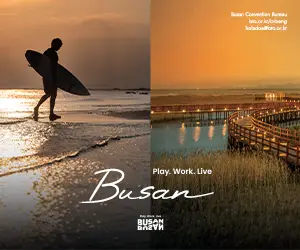Activity / Activities
What is a travel activity?
In the context of travel and tourism, activities refer to various experiences or pursuits available to travelers during their trips. These can range from outdoor adventures like hiking, biking, and snorkeling, to cultural experiences such as museum visits, cooking classes, and historical tours. Activities are central to the travel experience, allowing travelers to engage with the destination, learn new skills, or simply enjoy leisure time.
The significance of activities in travel cannot be overstated. They not only add excitement and enjoyment to the travel experience but also deepen the traveler’s understanding and appreciation of a destination. From adrenaline-fueled adventures that push the limits of one’s courage to peaceful moments of reflection in nature, activities tailor the travel experience to individual preferences, making each journey unique. Through these experiences, travelers can discover not just the places they visit but also new aspects of themselves, fostering personal growth and unforgettable memories.
List of Travel Activities
Travel activities span a wide range of experiences, catering to every interest, energy level, and curiosity. Here’s a breakdown of some popular categories and examples of activities within each that travelers might explore during their journeys:
Leisure Activities
- Beach Lounging: Relaxing on sandy shores with a book or soaking up the sun.
- Spa Visits: Enjoying massages, facials, and wellness treatments.
- Winery/Brewery Tours: Sampling local wines or beers while learning about production processes.

Adventure Activities
- Scuba Diving/Snorkeling: Exploring underwater ecosystems and marine life.
- Hiking and Trekking: Venturing through nature trails, mountains, or national parks.
- Zip-lining: Gliding over forests or canyons for thrilling views.
Cultural Activities
- Museum Visits: Discovering art, history, and science through curated exhibits.
- Cultural Performances: Watching traditional dances, music, and theater shows.
- Cooking Classes: Learning to prepare local dishes with native ingredients.

Educational Activities
- Language Classes: Picking up basics of the local language for a deeper connection with the destination.
- Historical Tours: Guided visits to significant landmarks, monuments, and ruins.
- Wildlife Safaris: Observing animals in their natural habitat while learning about conservation efforts.
Social and Recreational Activities
- Market Visits: Exploring local markets for souvenirs, crafts, and street food.
- Boat Cruises: Enjoying scenic views of coastlines, rivers, or lakes from the water.
- Photography Walks: Capturing the beauty of a destination through the lens, often guided by a local photographer.
Types of Activities for the Meetings Industry
The Meetings Industry encompasses a wide array of activities designed to enrich the event experience, facilitate networking, and enhance professional development. These activities are pivotal in achieving the strategic objectives of meetings, conferences, and corporate events. Here’s a breakdown of the diverse types of activities integral to the Meetings Industry:
Educational Workshops and Seminars
Focused on professional development, these sessions provide in-depth knowledge on specific topics, industry trends, and skill enhancement. They are led by experts and offer interactive learning opportunities through Q&A sessions, practical exercises, and group discussions.
Keynote Speeches
Keynote speeches are delivered by thought leaders, industry experts, or notable personalities to inspire, motivate, and set the tone for the event. These speeches often highlight innovative ideas, success stories, and strategic insights relevant to the audience.
Panel Discussions
Panel discussions bring together a group of experts to discuss various perspectives on a particular subject. These sessions encourage open dialogue, debate, and exchange of ideas, offering attendees a comprehensive understanding of complex topics.
Networking Events
Networking events are designed to facilitate connections among attendees, allowing for the exchange of ideas, collaboration opportunities, and the formation of professional relationships. Formats can range from casual meet-and-greets to structured speed networking sessions.
Team-Building Exercises
These activities aim to foster teamwork, communication, and collaboration among participants. From problem-solving challenges to outdoor adventures, team-building exercises are tailored to strengthen bonds and improve group dynamics.
Cultural and Leisure Outings
Incorporating local culture and leisure activities into the event schedule allows attendees to explore the host location, enjoy unique experiences, and relax in a more informal setting. This can include guided tours, cultural performances, and gastronomic experiences.
Trade Shows and Exhibitions
An integral part of many conferences, trade shows offer businesses a platform to showcase their products and services, connect with potential clients, and stay abreast of industry innovations. Attendees benefit from hands-on demonstrations and one-on-one interactions with vendors.
Virtual and Hybrid Activities
Leveraging technology, virtual and hybrid activities offer remote participation options, expanding access and engagement opportunities. These can include virtual networking lounges, online workshops, and live-streamed sessions, allowing for a broader and more inclusive audience reach.
Planning for Activities
Researching and Planning Ahead
The key to a fulfilling travel experience often lies in careful planning, especially when it comes to selecting and scheduling activities. Here are some tips on how to effectively research and plan for activities before your trip:
- Start Early: Begin your research well in advance of your trip to get an idea of the types of activities available at your destination. This allows you to assess your options and prioritize based on your interests.
- Use Reliable Sources: Consult a variety of sources for information and reviews on activities, including travel guides, blogs, official tourism websites, and social media travel groups. Personal recommendations from friends or family who have visited the destination can also be invaluable.
- Check the Season and Weather: Certain activities may be seasonal or affected by weather conditions. Make sure to check the best times of the year for the activities you’re interested in to avoid disappointment.
- Balance Your Itinerary: While it’s tempting to pack your schedule with activities, remember to balance your itinerary with enough downtime to relax and spontaneously explore the destination.
Considerations for Booking Activities
When it comes time to book activities, several considerations can help ensure that your choices align with your travel goals and personal circumstances:
- Timing: Consider the duration of each activity and how it fits into your overall itinerary. Some activities may require a full day or specific timing (e.g., early morning for wildlife tours), so plan accordingly.
- Physical Requirements: Assess the physical demands of each activity to ensure it matches your fitness level and any mobility considerations. Activities like hiking, diving, or adventure sports may require a good level of physical fitness.
- Age Restrictions: Pay attention to any age restrictions for activities, especially if traveling with children or seniors. Some activities may have minimum age requirements for safety reasons.
- Advance Booking: Popular activities can fill up quickly, especially in peak travel seasons. Booking in advance can secure your spot and often provides better deals than last-minute bookings.
- Cancellation Policies: Before finalizing any bookings, review the cancellation policies. Look for options that offer flexibility in case of unexpected changes to your travel plans.
What is a travel activity book?
A travel activity book is a type of publication designed to entertain and engage individuals during their travels. These travel activity books are particularly popular among families with children, as they offer a variety of puzzles, games, coloring pages, and educational content tailored to keep young travelers occupied during long car rides, flights, or waits in transit. However, travel activity books aren’t exclusively for children; there are versions aimed at adults as well, featuring more complex puzzles, language learning exercises, cultural quizzes, and journaling prompts that encourage reflection on their travel experiences.
The content of a travel activity book often relates to travel themes, exploring different countries’ cultures, landmarks, and languages, making it not only a source of entertainment but also an educational tool. For children, these books can help develop their understanding of geography, cultural diversity, and basic travel etiquette, while for adults, they can serve as a fun way to learn about their destination or to pass the time enjoyably during the less exciting parts of their journey.
In addition to activities and games, these books might include practical tips for travel, interesting facts about various destinations, and challenges that encourage interaction with the local environment in a respectful and mindful way. Travel activity books can be generic, covering a wide range of destinations and topics, or they can be specifically tailored to a particular destination, offering insights and activities related to that place.
Previous Term: Accommodation
Next Term: Accessible Tourism
A | B | C | D | E | F | G | H | I | J | K | L | M | N | O | P | Q | R | S | T | U | V | W | Y | Z


